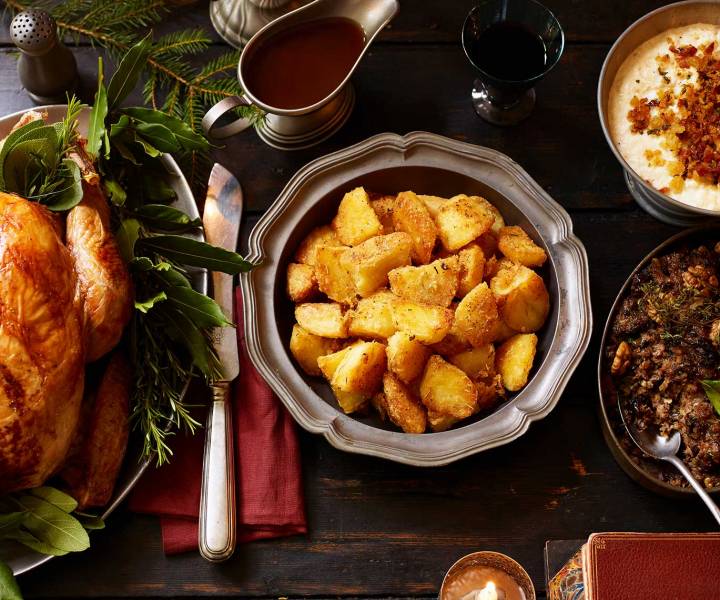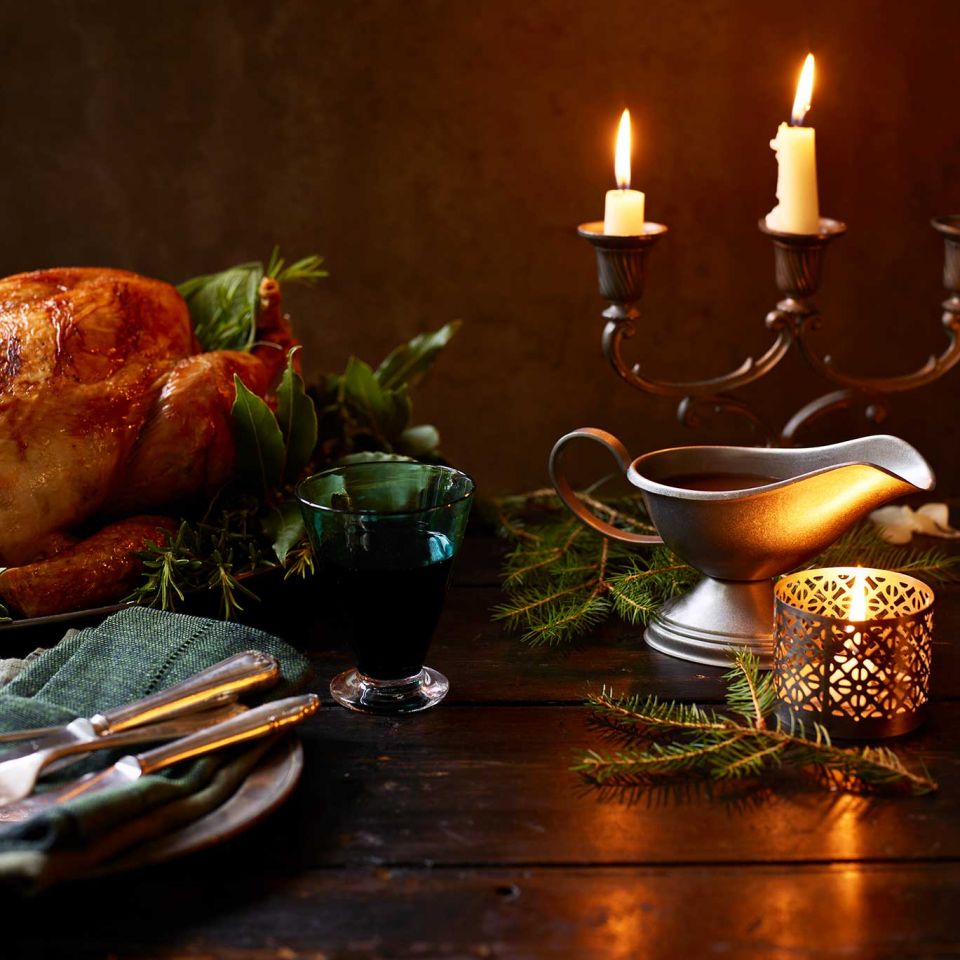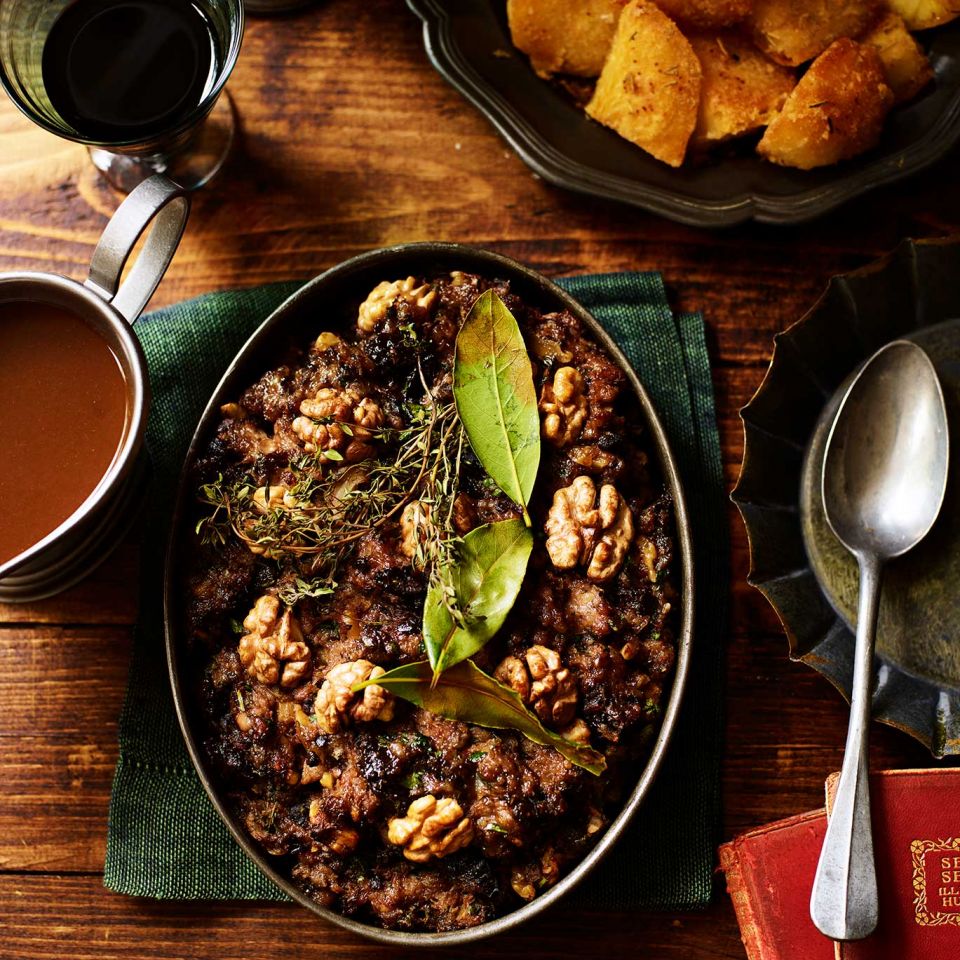Food
Best of British: Christmas lunch traditions
by Neil Davey

Brussels sprouts, turkey, seasonal sauces... Have you ever wondered where our Christmas lunch traditions come from?
Some Christmas traditions are flexible. Some are set in stone. The classic Christmas meal – or, at least, many parts of it – would appear to be very firmly in the latter category. For most of us, that glorious festive repast has to feature turkey, roast potatoes, cranberry sauce and/or bread sauce, Brussels sprouts, stuffing and pigs in blankets, among other things. So fixed are we in these notions that it took nearly two decades before my wife and I even dared have the conversation about whether we actually liked turkey.
When we decided that, er, we didn’t particularly, and switched to chicken instead, it felt like we’d broken a law or, at least, would be watched very closely by elves and reported to Santa. Even with that in mind, I still find myself looking at the people who opt for beef on 25 December with considerable suspicion...
Following tradition
Although the more traditional ‘main event’ in the UK would be goose (or boar’s head or even peacock, depending on how far back in history you look), turkey has been part of British life for a while. First brought to Britain in the 16th century, turkeys were bred for meat based on their size (and because other livestock, such as chicken and cows, provided more income from eggs and milk respectively).
Henry VIII is said to be the first king to enjoy a turkey on Christmas Day and, of course, the newly reformed Ebenezer Scrooge was very keen to purchase the big turkey for the Cratchits in A Christmas Carol (published in 1843) to replace their small goose because turkey, as Mrs Beeton put it, had become an established part of ‘a Christmas dinner with the middle classes’ during the 19th century. However, it wasn’t really until the 1950s that it overtook goose for the rest of us. The arrival of cranberry sauce is more of a mystery.

The cranberry isn’t indigenous to the UK – they’re grown in bogs mostly on the East Coast of the US – so this one would appear to be an American import from Thanksgiving Dinner. We certainly had a tradition of sour-fruit sauces and fowl – such recipes can be found dating back to the medieval times – but quite when cranberry took off here is harder to pin down. We certainly took to it though,with almost nine million jars of sauce purchased last year.
The more traditional option would be bread sauce, that mix of breadcrumbs, milk, onion, cloves, butter and bay leaves that’s either a wonderfully comforting perfect foil to the meat, or utterly disgusting, depending on who you ask. Bread sauce also dates back to medieval times, when bread was often used to thicken sauces. Stuffing, remarkably, dates back even further. While it’s likely that animals have been stuffed since man realised the need to remove their internal organs before cooking, and then decided to fill the resulting gap, the oldest cookery book known to man, Apicius de re Coquinaria (written by the Roman Apicius around the first century AD) includes recipes for stuffed chicken, stuffed hare, stuffed pig and even stuffed dormouse. While much of our traditional Christmas meal owes everything to an assortment of other countries, pigs in blankets – as we know them – are resolutely British.
For us, they’re small sausages wrapped in bacon, for the rest of the world, they’re sausages in pastry or bread or pancakes. The earliest reference to a dish called ‘pigs in blankets’ appears to be a Betty Crocker cookery book for children, published in the US in 1957, although that is for a sausage wrapped in pastry and baked.

A sausage-loving nation
We pretty much stand alone as a nation for support of both the pastry-wrapped sausage roll and our festive love of a bacon- wrapped chipolata. (Rather charmingly, puff pastry-wrapped sausages in Germany are called würstchen im schlafrock, which translates as ‘sausage in a dressing gown’, while in Finland they’re called nakkipiilo, which translates as ‘hidden sausage.’ Russia takes a more practical approach – their equivalent to the sausage roll translates as ‘sausage in dough’.) The aforementioned debt we owe to other countries is perhaps most evident in the vegetable selection. The Christmas meal is ostensibly a roast, so it’s probably a given that potatoes (originally from Peru) and carrots (originally from Persia but owing their colour to the Dutch) will take some plate space. The essential vegetable element, though, has to be the Brussels sprout. It might divide the crowds, but even devout sprout haters often say they have to have one on their plate because, well, otherwise it’s just not Christmas.
As the name suggests, Belgium is where the sprout story starts. ‘The Brussels sprout is derived from cabbages,’ explains Jane Leonard, the customer marketing and innovation manager for Kettle Produce, the sprout suppliers for Sainsbury’s. ‘They were grown in Belgium from probably around the 1200s.’ According to food historian Angela Clutton, we only adopted sprouts as a Christmas essential around the turn of the 20th century. ‘Sprouts only became widely available in Britain towards the end of the 1800s – around the time that our modern ideas of Christmas feasting were being “invented”,’ she explains.
Renaissance sprouts
In recent years, sprouts have had something of a renaissance, moving from the bitter, acrid vegetable that your grandmother started boiling around October, to a fresh, crunchy, vibrant ingredient that has become the beloved of young chefs the world over. ‘We have worked really hard to breed Brussels that are sweeter and more appetising,’ says Jane.
‘We are proud of our sprouts.’ And such is the demand for these little green crunchy vegetables that preparation for Christmas starts seven months earlier – in May. ‘We planted 5.5 million sprout seeds this year, over about 146 hectares. We will harvest around 190 million sprouts across the season [from September to around March] – and 60 million of those will be for Christmas.’ If you are struggling to picture just how many sprouts that is, Jane explains that, laid end to end, they would reach from their headquarters in Fife to New York, or would fill around four Olympic-sized swimming pools. It’s a lot of sprouts.
Tradition plays a huge part in most people’s Christmas Day meal – and so do history and geography. It might seem like a relatively simple plate of food that we all sit down to enjoy every year, but there are a whole lot of stories behind it.












